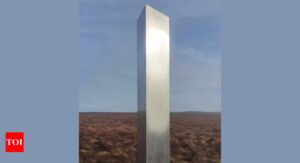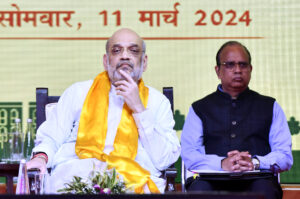Recent tremors in Delhi-NCR don’t signal big event but strong quake can’t be ruled out: Wadia Institute
[ad_1]
The recent tremors in Delhi-NCR do not point towards a big event though a strong earthquake cannot be ruled, the Wadia Institute of Himalayan Geology has said.
It said such tremors are not unusual in the Delhi-NCR area, but indicate that strain energy is built up in the region.
All the earthquakes in Delhi-NCR are due to the release of strain energy which has been accumulated as a result of northward movement of the Indian tectonic plate and its collision with the Eurasian plate through the fault or weak zones, the institute said in a statement.
There are so many weak zones and faults in the Delhi-NCR: Delhi-Haridwar ridge, Mahendragarh-Dehradun subsurface fault, Moradabad fault, Sohna fault, Great boundary fault, Delhi-Sargodha ridge, Yamuna river lineament, Ganga river lineament, it said.
The Wadia Institute of Himalayan Geology functions under the Department of Science and Technology.
Since the seismic network is quite good, present micro to minor earthquakes in and around Delhi-NCR could be recorded, it added.
All the recent 17 quakes recorded in the Delhi-NCR region were of low to medium intensity on the Richter scale – April 12 – Delhi (3.5); April 13-Delhi (2.7); April 16 – Delhi (2); May 3 – Delhi (3); May 6 – Faridabad (2.3); May 10 – Delhi (3.4); May 15 – Delhi (2.2); May 28 – Faridabad (2.5); May 29 – Rohtak (4.5 and 2.9); June 1 – Rohtak (1.8 and 3); June 3 – Faridabad (3.2); June 4 – Rohtak (2.1); June 8 – Delhi-Gurgaon border (2.1); June 18 – Rohtak (2.1); June 19 – Rohtak (2.3).
Of these 17, only the quake that occurred at Rohtak was above 4 on the Richter scale which falls under medium intensity quake.
The historical earthquake catalogue shows that there were strong earthquakes of 6.5 magnitude at Delhi in 1720; 6.8 at Mathura in 1803; 5.5 near Mathura in 1842; 6.7 near Bulandshahar in 1956; 6 near Faridabad in 1960 and 5.8 near Moradabad in 1966 in the Delhi-NCR.
The Delhi-NCR has been identified as the second highest seismic hazard zone (Zone IV).
“Sometimes, a vulnerable zone remains quiet, experiences small magnitude earthquakes that do not indicate any bigger earthquake, or receives a sudden jolt by a big earthquake without any call,” the statement said
Out of 14 small magnitude earthquakes in the Delhi-NCR, the Rohtak on May 29 earthquake had the magnitude of 4.6, it added.
“Since an earthquake cannot be predicted by any mechanism, the tremors cannot be described as the signal of a big event,” it said.
The recent events cannot be defined as the “foreshocks”, it added.
If a big earthquake takes place in a region, all smaller tremors that occurred in the immediate past at that region are categorised as the foreshocks.
“Therefore, scientifically all these tremors in the Delhi-NCR can be demarcated as foreshocks only after a big earthquake takes place immediately. Though it cannot be predicted, a stronger earthquake posing a threat to people and properties cannot be ruled out,” the institute said in the statement.
“Though our understanding, in terms of when, where and with how much energy (or magnitude) an earthquake can occur, is not clear, but the vulnerability of a region can be understood from the past seismicity, calculation of strain budget, mapping of active faults,” it added.
Since an earthquake cannot be predicted by any mechanism, the tremors cannot be described as the signal of a big event, the institute added.
[ad_2]
Source link







